With the industry’s workforce dwindling, jewelers are finding ways to get young people excited about the craft.

In response to generational change, evolving technologies, and the limits of traditional education, brands are establishing academies, mentorships and hands-on training to safeguard craft skills and meet the needs of a shifting industry. From grassroots outreach in schools to purpose-built training centers within major manufacturing sites, these efforts are positioning jewelry-making as a viable and rewarding career path.
Rather than relying on existing education routes, the trade is taking responsibility for its own future. That’s the philosophy behind the Future Jewelers Academy, a US-based nonprofit initiative that industry leaders launched in 2024 through the Black in Jewelry Coalition (BIJC) Education Fund.
“The Future Jewelers Academy was created to address the national shortage of skilled bench jewelers in the US,” explains cofounder Malyia McNaughton, who also cofounded the BIJC Education Fund itself and is the founder of jewelry label Made by Malyia.
The academy introduces students to the craft early, starting as young as high-school age. Its first program launched in April 2024 at the Brooklyn STEAM Center, a career and technical-training hub in New York for 11th- and 12th-graders. A second cohort followed at New York’s Baldwin High School earlier this year. Here, professional jewelers’ benches have replaced traditional classrooms, and students spend two-and-a-half hours a day, three days a week, learning subjects through the lens of jewelry-making.
“Students have shown pride in their work and enthusiasm for the craft,” says McNaughton. “One student even said the program helped her mental health — it became a space for meditation and creativity.”
With support from sponsors like US insurance firm Jewelers Mutual and tool donations from Connecticut-based jewelry-equipment company Gesswein, the academy is proving that when the trade invests in training, the community responds.
“If young people are given the tools, the exposure and the mentorship,” says McNaughton, “they will rise to the occasion.”
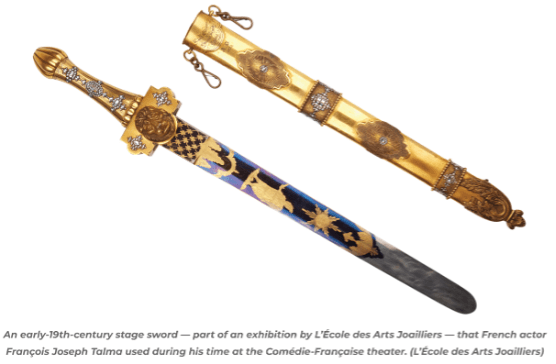
Spotting talent: The Leopards
In the UK, The Leopards initiative is similarly putting a focus on early exposure and mentoring. Founded in 2016 by a group of British jewelry icons — designers Solange Azagury-Partridge, Theo Fennell and Stephen Webster, jewelry expert Susan Farmer, and author Carol Woolton — The Leopards are not a traditional academy. They operate as a collective of leading industry figures committed to mentoring young talent and promoting British craftsmanship.
“We felt that not enough young people even knew about jewelry-making and silversmithing to think of it as a viable career path,” explains Fennell. “The trade is short on skills in this country, especially as many brands [have] outsourced manufacturing abroad. But now, with a return to craftsmanship, there is an opportunity, and we want young people to know it exists.”
Their solution? The Leopard jewel-tool box, a De Beers Group-sponsored initiative that brings professional-grade jewelry-making kits into secondary schools. The first set went to Aston University Engineering Academy, which offers academic and technical education to students aged 13 to 19 in the Birmingham area. The idea is simple: If you put tools in the hands of young people, they just might discover a passion.
“It is like picking up an instrument at 13,” says Fennell. “You might find you are good at it — and that opens doors.”
The Leopards are also keen to boost the sector’s visibility. “We have fantastic creative and craft skills in this country and no one banging our gong,” Fennell says. “So we will bang away.”
As part of its efforts, the group offers The Leopards Award, which recognizes excellence in British jewelry design while also highlighting jewelry’s cultural impact in film, fashion and the arts. The award itself, which Azagury-Partridge designed, draws inspiration from the centuries-old Leopard Hallmark used on London-made gold and silver.
The focus on visibility and fostering young talent also underpins a new initiative at Aston, which became the first school in the UK to offer a jewelry-making T-level. The academy introduced this vocational qualification when the first Leopards toolboxes arrived in March 2024. With the goal of preserving Birmingham’s historic Jewellery Quarter and its legacy, the program has the backing of the Goldsmiths’ Company and is part of a wider push to restore parity between creative trades and academic careers.
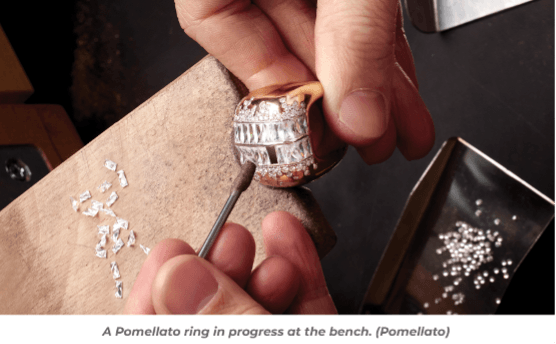
Golden opportunities with Pomellato
In Italy, the skill gap is even more acute. Some 50% of the jewelry workforce will reach retirement age in the next decade, and only 13% of workers are under 30, according to Confindustria Federorafi, Italy’s national federation of goldsmiths, silversmiths and jewelry manufacturers. The cause? A dwindling pool of skilled artisans and a perception that vocational schools are inferior to academic tracks.
The response was Pomellato’s Virtuosi Academy, which the Milanese jewelry label founded in 2018 in partnership with the city’s Galdus professional school as a long-term investment in Italy’s artisanal future.
“The Pomellato Virtuosi Academy is more than an educational project,” says Pomellato CEO Sabina Belli. “It embodies our deep dedication to preserving and advancing Italian goldsmithing. It serves as a bridge between tradition and innovation.”
The academy provides a structured, three- to seven-year training journey that combines classroom theory, lab work, apprenticeships, and technical courses delivered by Pomellato’s master goldsmiths. Tracks include gem-setting, engraving, 3D design, and stone-cutting, with each class taking place in Pomellato’s own high-spec laboratories.
In 2024, the academy relocated to the Milano Innovation District (MIND), doubling its student intake to 140 and offering courses with a sharper focus on digital technologies and cross-functional skills. It is a strategic move as Italy’s sector evolves.
“Luxury houses and small enterprises alike struggle to find specialists who can blend traditional skills with innovation,” says Galdus president Diego Montrone. “Pomellato Virtuosi answers that need.”
The academy is more than a training center, he continues. It is “an authentic talent forge where students do not simply learn a profession, but enter a world of precision, creativity, and attention to detail.”
The results speak volumes: a 90% employment rate for graduates, with dozens of student-led entrepreneurial ventures.
“We are creating vocations,” says Belli. “Not just skills.”
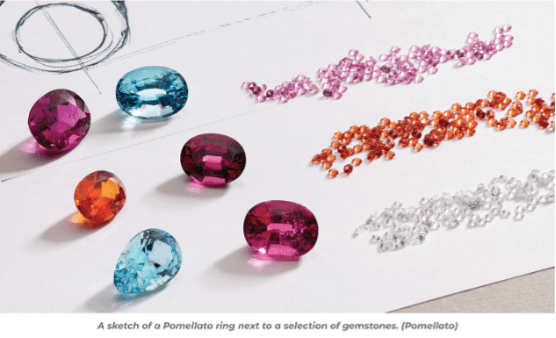
Bulgari on board
Pomellato is not the only Italian maison taking ownership of education. Roman jeweler Bulgari has opened the Scuola Bulgari, a new public-facing school embedded in its recently expanded Valenza manufacturing site, the largest single-brand jewelry-production facility in the world.
The Scuola joins the Bulgari Jewelry Academy — which the company founded in 2017 — and offers courses in goldsmithing and gem-setting with experienced artisans and educators from the Tarì Design School. The entire program, which is recognized by Italy’s education ministry, represents a milestone in Bulgari’s vision for vertical integration: to oversee every stage of jewelry creation while investing directly in the next generation of craftspeople.
“As a patron of goldsmithing art, Bulgari further strengthens its commitment to a territory where exceptional craftsmanship has been passed down since the early 19th century,” says company CEO Jean-Christophe Babin.
With more than 1,100 current employees — which the company expects to grow to 1,600 by 2029 — and a sustainable campus that gets its power from geothermal and solar energy, the site combines environmental innovation with artisanal heritage.
“The Scuola is the beating heart of the project,” says Corinne Le Foll, Bulgari’s jewelry managing director. “It is a bridge between past and future.”
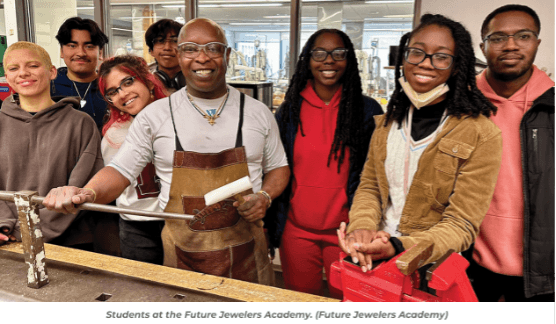
Cultivating taste: L’École
While hands-on training is crucial, jewelry education also requires cultural context. That’s where L’École des Arts Joailliers comes in.
Founded in 2012 with the support of French jeweler Van Cleef & Arpels, L’École offers public courses in gemology, history and craft. With locations in Paris, Hong Kong, Shanghai and Dubai, it aims to make jewelry culture accessible to all.
“Our courses are designed to refine one’s eye, cultivate a sense of taste, reveal the artistic aspects, and provide an initiation into the culture surrounding jewelry,” says L’École president Lise Macdonald. “Many traditional jewelry-making techniques are at risk of being lost. Our ‘Savoir-Faire’ courses, taught by experienced jewelers and craftsmen, ensure that these skills keep being practiced, and that the future generations are aware of and interested in it.”
Its newly opened campus in Paris’s Hôtel de Mercy-Argenteau includes a library, bookshop, exhibition space, and classrooms. Programs are hands-on and multi-generational, blending academic learning with practical craftsmanship.
“Ultimately we believe that L’École can play a vital role in shaping a more vibrant and creative future for the sector, confirming jewelry as an art form and human heritage that everyone can appreciate,” says Macdonald.
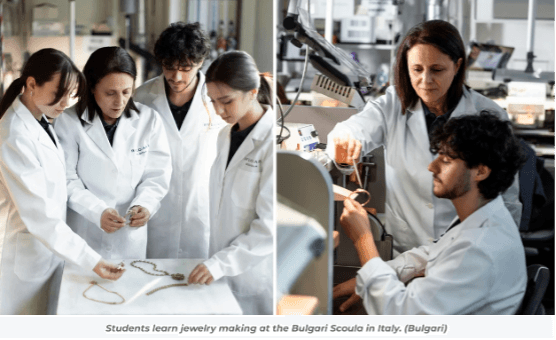
Inside job
It is no coincidence that the industry itself is leading these education efforts. As The Leopards’ Fennell notes regarding the UK, “successive governments have been lax in supporting apprenticeships and promoting the trades.” The traditional education system, many feel, lacks the infrastructure and understanding necessary to teach jewelry’s nuanced technical skills.
Instead, the trade is building its own system — one that grasps the rhythms of a workshop and the creativity it takes to innovate in an evolving market. Whether it’s Pomellato nurturing young goldsmiths in Milan, The Leopards distributing tools in British schools, or Future Jewelers Academy cultivating talent in Brooklyn, an alternative model for jewelry education is emerging.
As McNaughton puts it, “taking the lead in education isn’t just good for business; it’s good for the culture, the craft, and the communities we serve.”
